The 20th century easily stands out as one of mankind’s destructive epochs, with two World Wars and several intermittent conflicts encompassing regions across the globe. And such mass-scale destruction was ironically brought on by the flourishing of technology. Arguably, nothing quite epitomizes this ‘dark side’ of technological progress than war-inspired man-made specimens like arms, armaments, and weapons. To that end, let us check out the eight super-heavy guns from Second World War that bridged the gap between engineering brilliance and remorseless barbarity.
Contents
Todt Battery
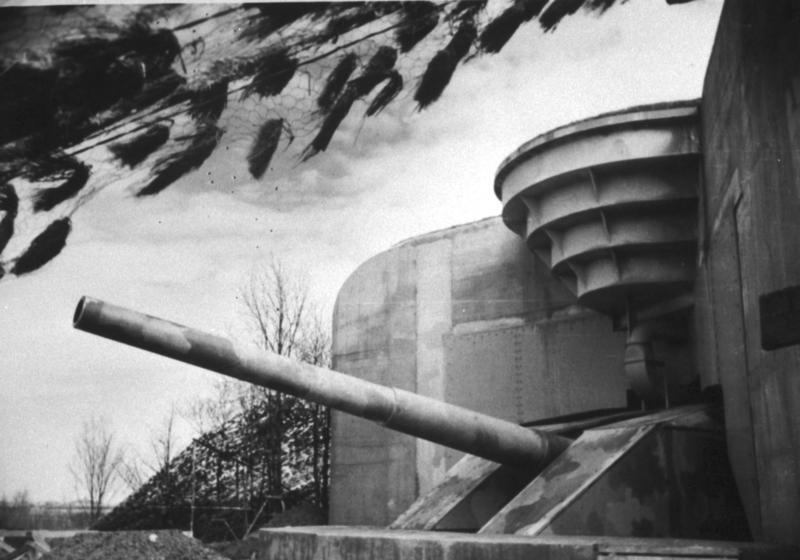
Robust guns emerging from solid bunker-like constructions (also known as casemates) made of 3.5 m thick reinforced concrete, the Todt Battery in every way signified the defensive stratagem adopted by the Germans in the middle stages of the Second World War.
Posing as a grand component of the so-called Atlantic Wall – which entailed an expansive bulwark of coastal fortifications as a defense against Allied invasion, the battery comprised four casemates equipped with 380 mm caliber Krupp guns.
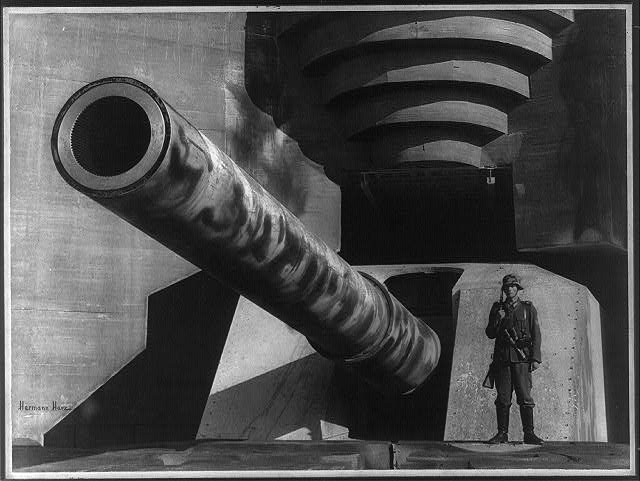
All of these guns had a substantial range of 55.7 km, thus making their cartridges capable of reaching up to the coastal regions of Britain. In fact, the installation’s armaments replicated those of the renowned German battleships Bismarck and Tirpitz. But oddly enough, the Todt was never used to its full capacity and was successfully captured by Anglo-Canadian troops in late-1944.
Karl-Gerät
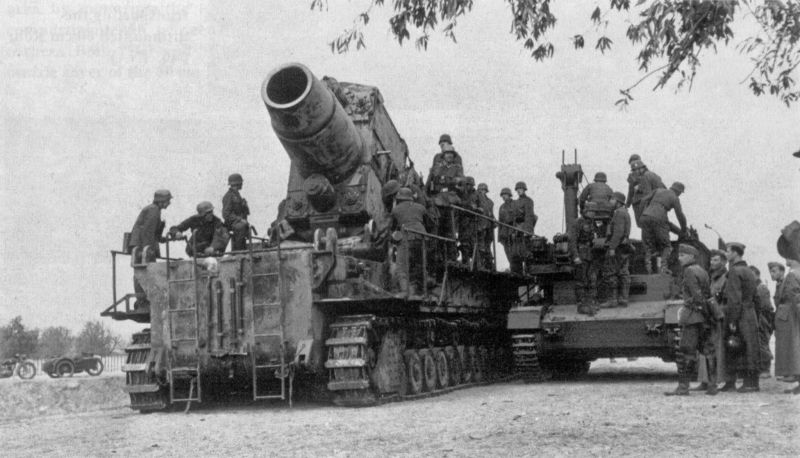
Translating to ‘Karl Device’ in German, the Karl-Gerät was the largest self-propelled machine of destruction ever built by man. The massive contraption with a length of 11.15 m (37 ft) and a weight of 124 tons, had an equally monstrous barrel with 3.16 m (more than 10 ft) width.
Seven of such howitzers were made by the German military technology group Rheinmetall; and six of them saw combat action against Russian, Polish, and Allied opponents. As for their cased charged shells of 600 mm calibers, the 2-ton weighing projectiles had a maximum firing range of around 10 km.
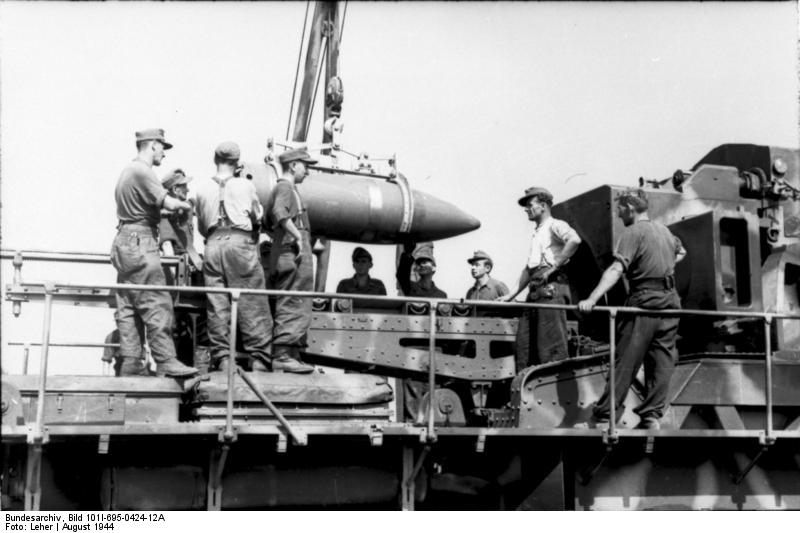
The weightiness of the ‘vehicle’ however was a disadvantage with the top speed of Karl-Gerät only reaching up to 10 km per hr. Moreover, the huge howitzer had to be manned by a crew of 21 people and had a maximum operational range of about 60 km when fueled by a diesel engine.
Obusier de 520 modèle 1916
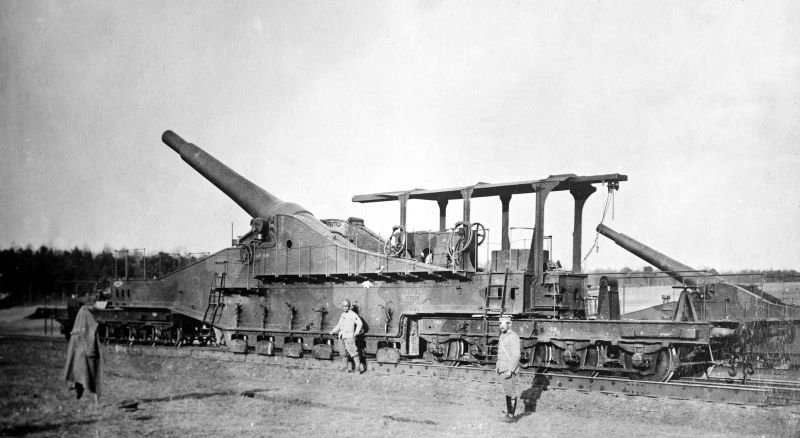
As can be discerned from the year mentioned in the model name, the humongous French railroad howitzer was originally designed (as the biggest ordnance piece by Schneider et Cie) in 1916 during First World War – but it didn’t fire a single shell during the ongoing conflict. Oddly enough, the gun was captured almost 24 years later by the Germans during their invasion of France in 1940 and then used as a Nazi German weapon during the infamous siege of Stalingrad.
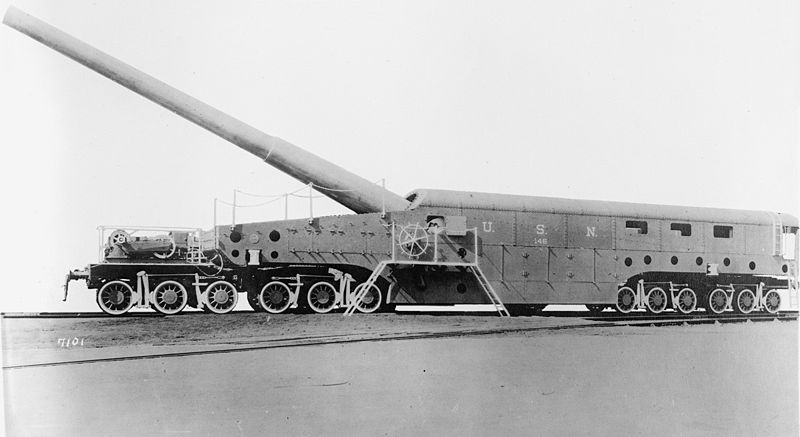
The electrically powered contraption was gargantuan, to say the least, with its total length of 30.38 m (99.7 ft), weight of 263 tons, and barrel length of 11.9 m (39 ft). As expected from such ‘boisterous’ dimensions, the shells had 520 mm calibers and weights of over 1,400 kg. And in spite of its huge scale, the gun could only displace one round in 6 minutes, with a maximum range of around 17 km.
Krupp 28-cm-Kanone 5 (E)
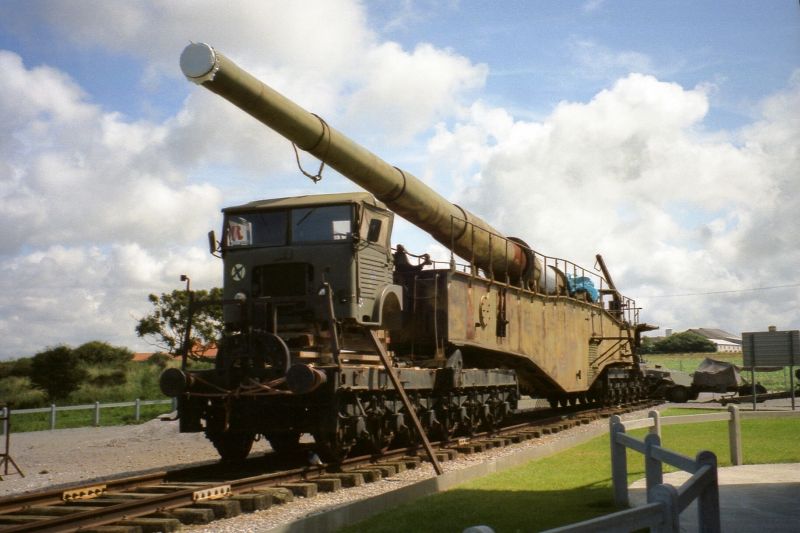
One of the very few guns with advanced engineering that matched its tactical ‘aptitude’, the Krupp 28-cm-Kanone 5 or K5 was a heavy railway gun with a massive 21.5 m (71 ft) long barrel. Utilizing what is known as the “Vögele Turntable”, the huge weapon had the capacity to turn 360 degrees – which undoubtedly added to its tactical value.
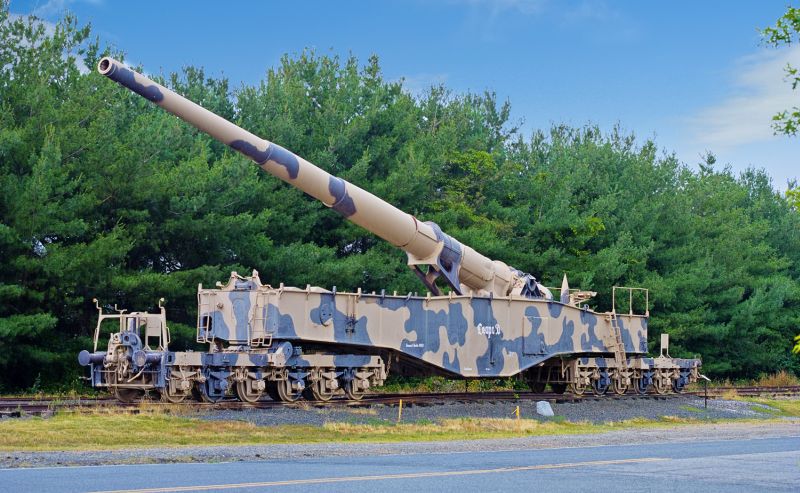
The ‘Anzio Annie’ of the Krupp K5 family was especially successful against the Allied troops when over 50,000 soldiers made their amphibious landings in Italy in Anzio, Italy. In fact, according to many sources, the invasion effort was brought to a standstill for almost 3 months – with significant aid from the humongous 218-ton gun, which fired its huge 283 mm shells weighing 250 kg, over a range of 64 km!
1938 Railway gun TM-3-12
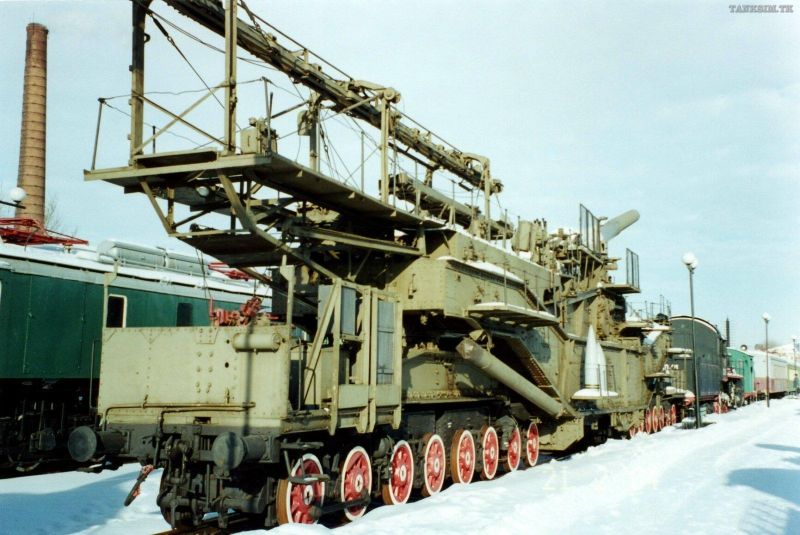
A very interesting military specimen – the Soviet-built 1938 Railway gun TM-3-12 was actually constructed from the salvaged 1907 naval gun that was originally equipped on the sunken battleship, Imperatritsa Mariya. This mammoth ordnance saw action during the concurrent Soviet-Finnish war in 1940, while also having the distinction of serving the Soviet army till 1991, during the end of the Cold War.
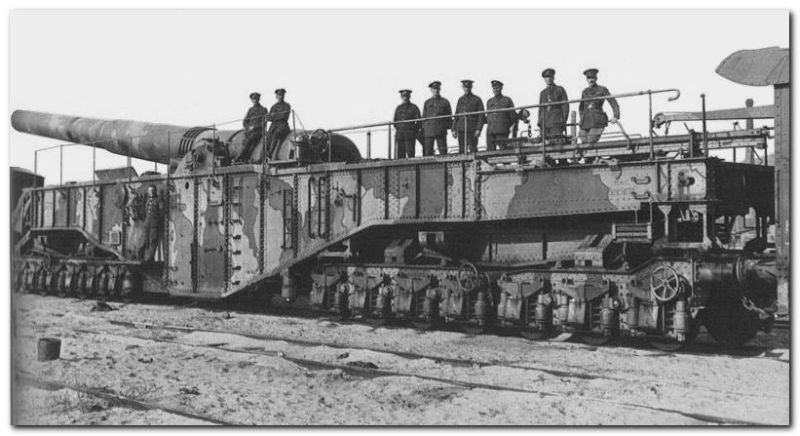
Some of the guns were also captured by the Germans during Second World War. These weapons were then transported all the way to Guernsey island in the English Channel. As for the armament’s stately specifications, the TM-3-12 had a turret length of 13 m (43 ft) which could fire 314 kg shells of 305 mm caliber, up to a distance of around 43 km.
Schwerer Gustav
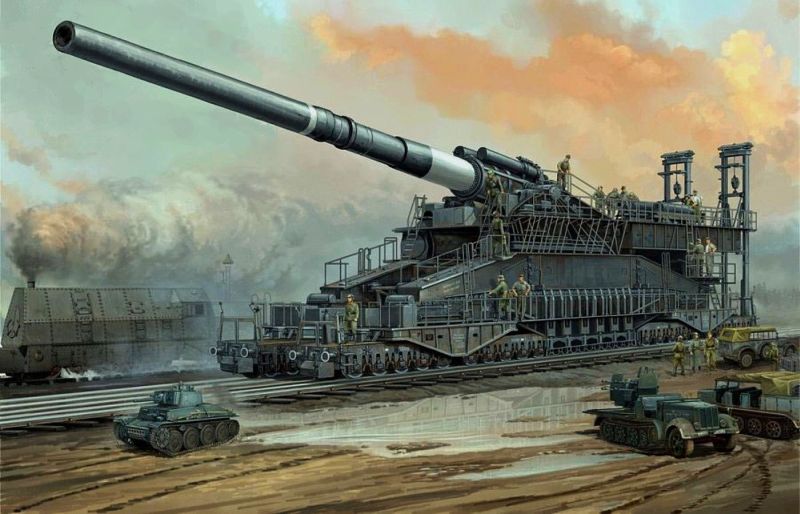
Simply put, the Schwerer Gustav still remains the largest-caliber rifled weapon ever used in the combat of mankind! Designed by Krupp Industries, the gargantuan instrument of war measured a colossal 47.3 m (155 ft) in length, 7.1 m (23 ft) in width, and 11.6 m (38 ft) in height – for a total of 135,500 cubic ft volume, was used sparingly during the Siege of Sevastopol, when it’s barrel was already worn out by just firing 48 shells.
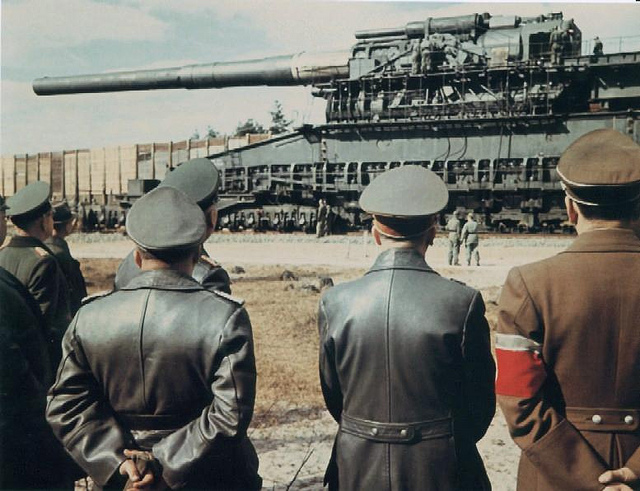
The hulking machine also holds the record for the heaviest artillery in the world with its 1,350 tons of weight. Unsurprisingly, the Schwerer Gustav could fire 800-mm shells of over 7.5 tons weight, via its 32.5 m (106 ft) long barrel, with a firing range of 47 km.
Vergeltungswaffe 3 Cannon
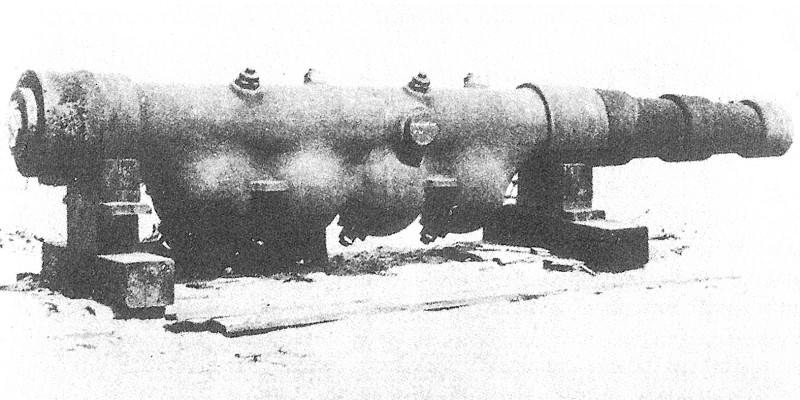
While not having the mammoth structural scope of the Schwerer Gustav, the V-3 (Vergeltungswaffe 3) more than made up for it with its extensive length of 130 m (430 ft). The entire armament was based upon the process of multi-charges in which a second propellant charge could significantly enhance the velocity of the fired projectile.
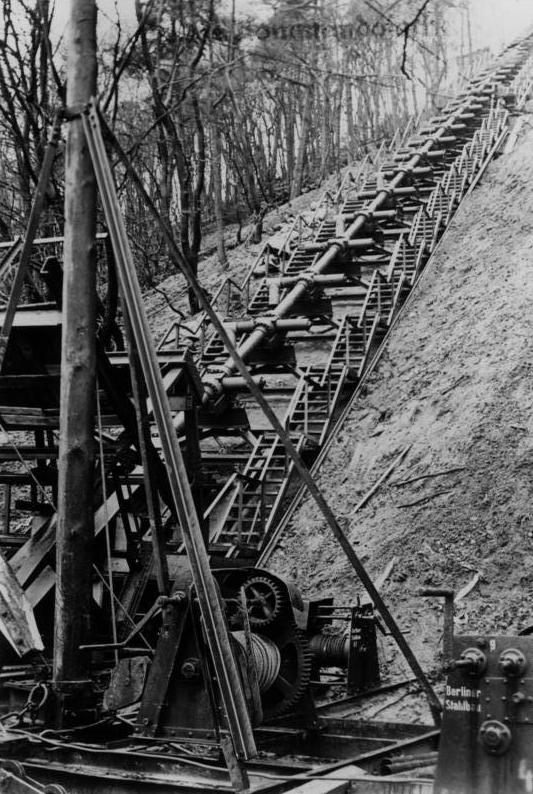
The super-gun with its 165 km range was originally planned for dedicated bombarding of London from over the English Channel, and so was positioned in Pas-de-Calais in northern France. But tactful bombings raids from the Allied forces disabled the artillery’s capacity to function in a proper manner. However, a similar model was utilized for long-range bombarding of Luxembourg during the later stages of the war (which was done with 150-mm caliber shells with 140 kg individual weights).
Haubitze M1
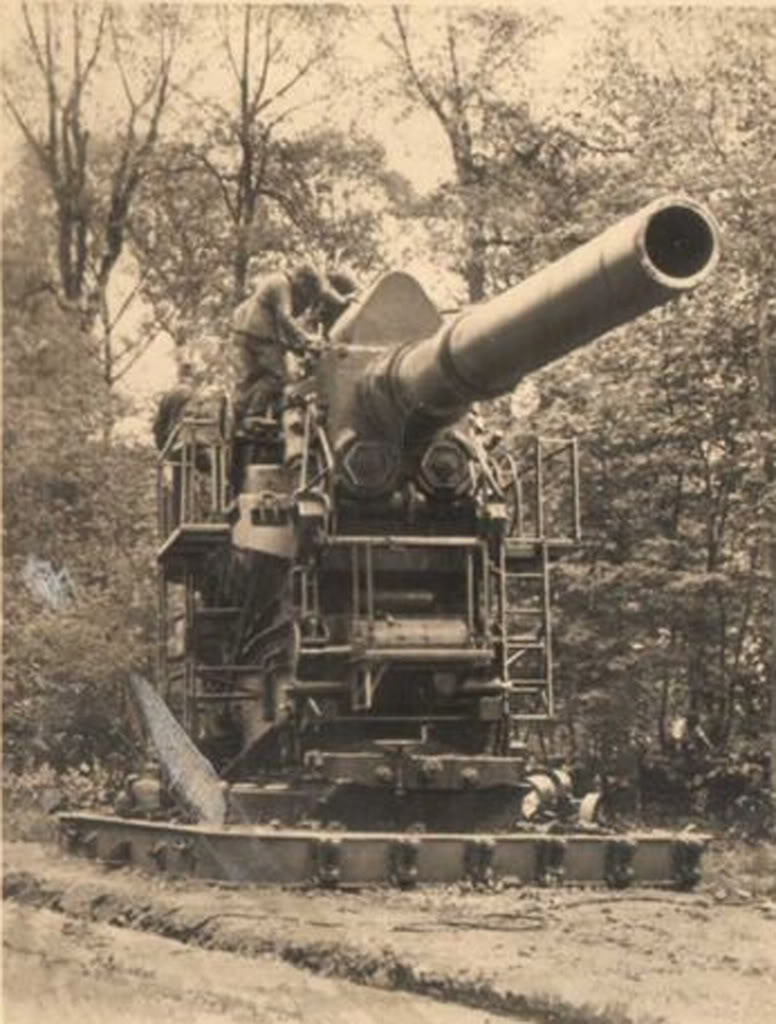
Categorized as a super-heavy howitzer, the Haubitze M1 was seen in action across many theaters of the Second World War, including France, Belgium, Poland, and Russia. Flaunting its dual-recoil mechanism and a dual-component carriage, the 75-ton ordnance had a substantial barrel length of 8 m (26 ft), while having a firing range of about 21 km.
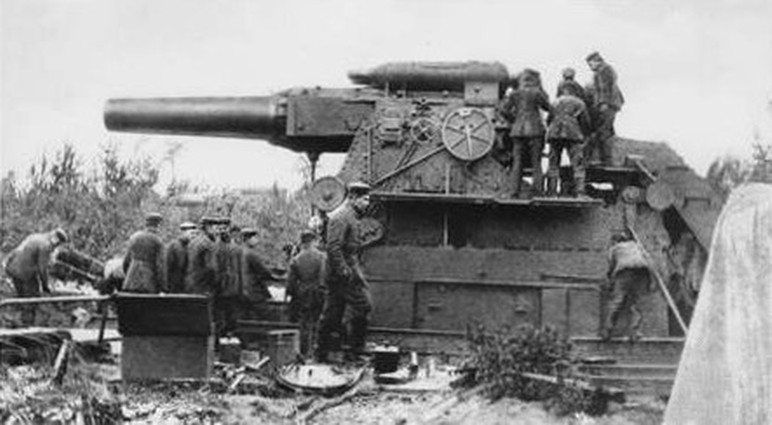
Given its howitzer-oriented characteristics, the Haubitze M1 was used for big-caliber projectiles of 356 mm that were tailored for long-drawn siege actions. To that end, it comes as no surprise that the gun adequately played its part in famous arenas like the assault on Sevastopol, the Siege of Leningrad, and the Warsaw Uprising.
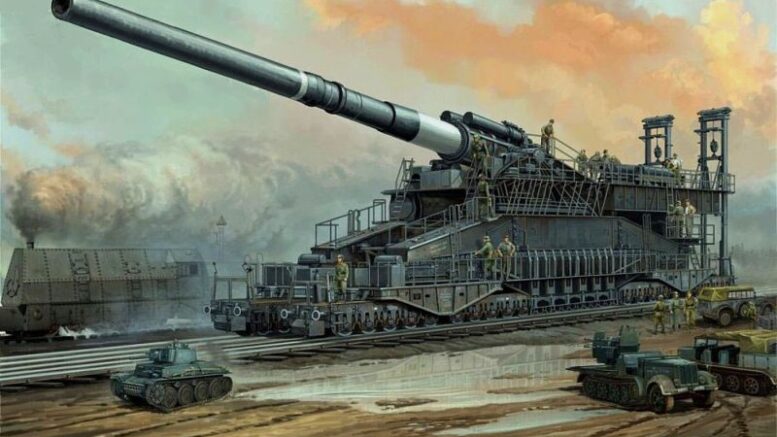


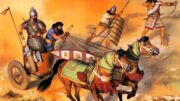

Be the first to comment on "8 Of The Biggest Guns Of Destruction Used During The Second World War"